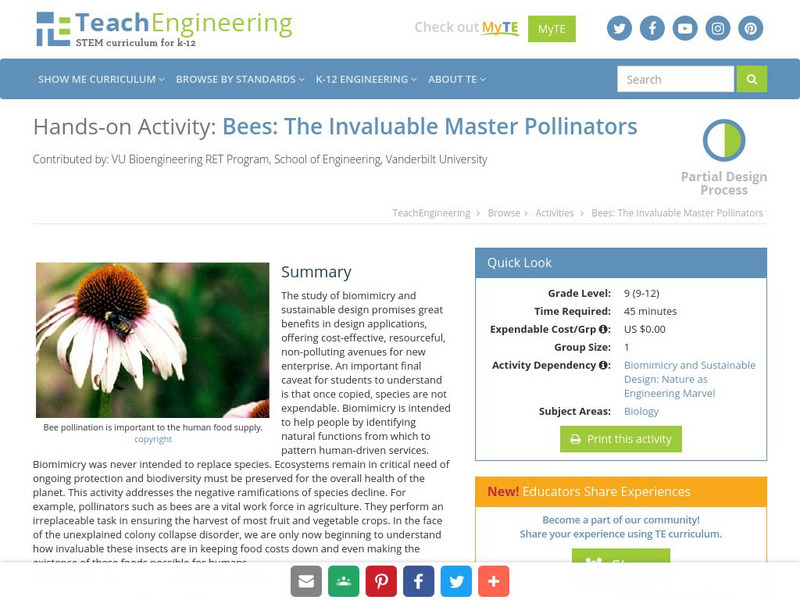The study of biomimicry and sustainable design promises great benefits in design application. It affords means by which to promote cost-effective, resourceful, non-polluting avenues for new enterprise. These "blueprints" have existed previously as underappreciated strategies by relatively unfamiliar organisms. An important final caveat, however, must still be addressed. One cannot leave the student with the misunderstanding that once copied, species are expendable. Biomimicry is intended to allow humans to benefit by identifying a natural function and patterning a human driven service from it. Biomimicry was never intended as a means by which to replace a species. Ecosystems are still in critical need of protection, and biodiversity must be preserved. The overall health of our planet hinges on the comprehension of this point. This final activity focuses attention on the negative ramifications associated with species decline. Pollinators are a vital work force in the circles of agriculture. They perform an irreplaceable task in guaranteeing the harvest of most fruit and vegetable crops. In the face of the unexplained colony collapse disorder, we are only now beginning to understand how invaluable these insects are in not only keeping food costs down, but also providing these foods at all to the consumer.

